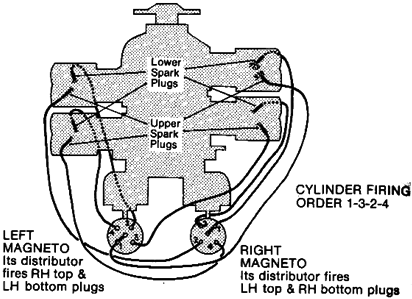How Do Aircraft Ignition Systems Work?
The aircraft engine ignition system is required to provide a rapid series of intense sparks suitable to ignite the weakest fuel/air mixtures normally used, correctly timed in relation to each compression stroke, and arranged to fire each cylinder in the desired sequence.

The sparking plugs provide the air gap which produces the spark for ignition of the fuel/air mixture in the combustion chamber. There are two plugs per cylinder, assuring efficient burning with greater power, providing an alternative source of ignition should one fail. The sparking plug consists of a central electrode, which conducts the high voltage from the ignition wire into the combustion chamber, and an outer body or shell, which holds the plug in the combustion chamber and provides a base for the earth electrode. The distance between the two electrode ends is the gap, which is usually set to about 0.012 inch to 0.015 inch. As the high voltage impulse from the magneto is forced to jump across the gap, a spark is produced which is strong enough to ignite the compressed fuel/air charge in the chamber. Current is fed to the sparking plugs through heavily insulated high tension wires. All these wires are grouped together inside a metal conduit, known as the ignition harness, the purpose of which is to support the wires and protect them from damage by engine heat, vibration and weather, reducing electrical interference within the aircraft.
|